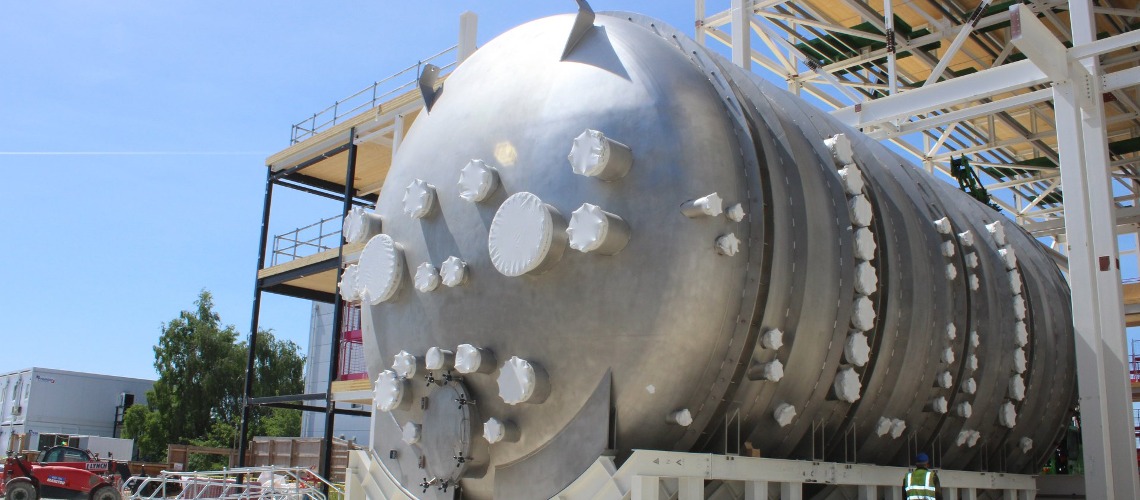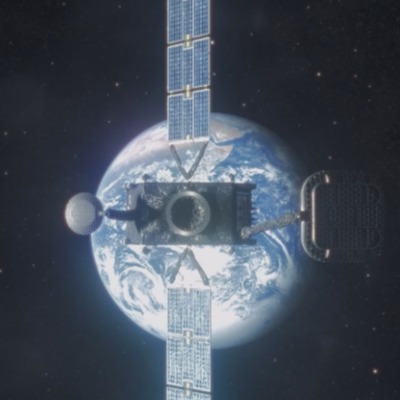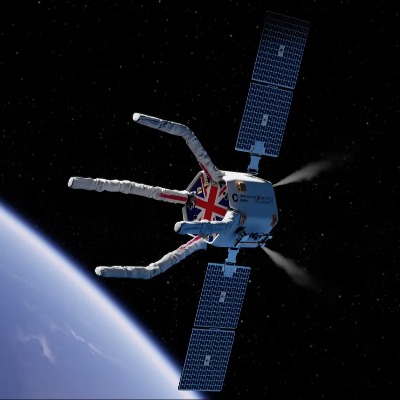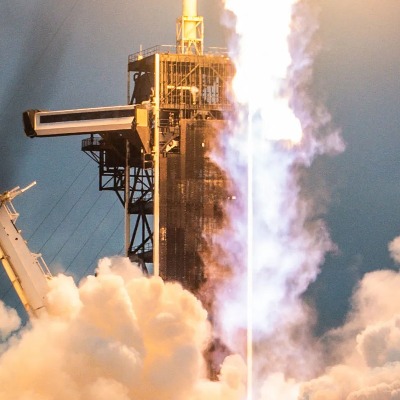The United Kingdom took a significant step forward in its spacefaring ambitions with the official opening of the National Satellite Test Facility (NSTF) at the Harwell Science and Innovation Campus. This state-of-the-art facility, dubbed the UK's "one-stop shop" for large satellite testing, is poised to revolutionize the nation's ability to develop and launch its own satellites.
The £116 million NSTF is a collaborative effort between the Science and Technology Facilities Council's (STFC) RAL Space and leading UK space sector companies. Previously, British companies had to rely on overseas facilities for crucial environmental testing, hindering domestic satellite development. The NSTF eliminates this hurdle, offering a comprehensive suite of testing capabilities under one roof.
"This is a landmark moment for the UK space industry," declared Dr. Sarah Beardsley, Director of RAL Space, at the opening ceremony. "The NSTF allows us to conduct vital environmental testing of satellites right here in the UK, accelerating development timelines and boosting our competitiveness in the global space market."
The enormous chamber will be used by the space industry to test spacecraft up to 7 tonnes for the harsh conditions of space. The chamber can be heated and cooled using nitrogen cooled shroud panels to achieve a temperature range of 95 Kelvin to 373 Kelvin to (-180°C to +100°C) so that satellites can be tested for missions into the chill of deep space or near to the Sun. It will be operated by STFC’s RAL Space, and alongside other test equipment at the National Satellite Test Facility will enable UK businesses to bid competitively for new contracts and remain a world leader in space technologies.
Science Minister Amanda Solloway said: “The UK is a world-leader in space technology and this impressive new chamber, backed by government funding, will significantly bolster our satellite testing capabilities. Importantly, it will ensure that our space industry has the first-class facilities they need to test large, complex spacecraft as we work towards the UK's first satellite launch."
The chamber completed a long and complex journey from the manufacturers Angelantoni Test Technologies Srl based in Massa Martana, Italy, to be installed in the facility at the Harwell Campus in Oxfordshire. A team of specialist commissioning engineers will travel from Italy to Harwell to complete the installation and testing of the vacuum vessel later in the year.
Professor Chris Mutlow, Director of RAL Space said: “This has been an incredible feat of engineering and logistics. The installation of a facility of this scale is at the best of times fraught with complexities but this has been made even more challenging because of coronavirus. I am delighted that the chamber has completed its epic 5800km journey and is now safely in position in the National Satellite Test Facility where it will offer a new capability to the space community as part of the only set of co-located space test facilities at this large scale in the UK.”
Weighing more than 98 tonnes in total, the chamber was transported in sections on 6 lorries accompanied by 6 police outriders and 5 support vehicles. The convoy from Portsmouth Harbour to Harwell Campus was one of the largest single road movements the UK has ever seen.
Each of the 8m diameter sections then had to be lifted into place and carefully positioned in order to be sealed perfectly later in the year. The final walls of the building will now be constructed around the chamber.
Sean Stewart, STFC’s National Satellite Test Facility Project Manager said: “The installation of the large space test chamber would have been an extraordinary endeavour at the best of times. In the current challenging circumstances, the team worked tirelessly through lockdown, first in Italy and then in the UK, to get the space test chamber into place. The final walls will now go up around the chamber and once complete, the National Satellite Test Facility will play a key role in securing end-to-end capability to build, test and launch satellites from the UK.”
Alongside the space test chamber, the National Satellite Test Facility will also offer vibration and pyro-shock equipment, electromagnetic compatibility (EMC) and antenna measurement system and acoustic testing. Construction will be complete in 2021 and operational from 2022. It builds on the
existing suite of environmental test facilities and expertise at RAL Space which include a further 10 space test chambers ranging from just 1m in diameter to 5m diameter.
Matt Fletcher, Head of Environmental Test, RAL Space said, “In addition to the current small, medium and large chambers RAL Space offers to the space sector, this new chamber vastly increases our test capacity, allowing much larger space hardware to be tested. It will allow us to test even more of the satellites which serve our everyday life, from telecommunications satellites which transmit our TV signal to the satellites monitoring the health of our planet, right here in the UK. Alongside UK launch capability, the National Satellite Test Facility supports UK businesses to compete globally to make these missions a reality.”
Large Space Test Chamber facts and figures:
- Internal dimensions: 7m x 12m – big enough to test a 7 tonne, minibus-size satellite
- External dimensions: 8m x 16m
- Total weight: 98 tonnes
- Temperature range 95K to 373K (-180°C to +100°C)
The NSTF boasts an array of cutting-edge equipment, including:
- Vibration chambers: Simulate the intense shaking a satellite experiences during launch.
- Thermal chambers: Test a satellite's ability to withstand extreme temperatures of space.
- Anechoic chambers: Mimic the vacuum of space and measure a satellite's radio frequency emissions.
The facility's first confirmed customer is the UK Space Agency, who have contracted the NSTF to test the European Space Agency's (ESA) Ariel payload. This next-generation telescope, designed to study the atmospheres of exoplanets, will benefit from rigorous testing at the NSTF before its scheduled launch in 2029.
"The NSTF is a vital national asset that will support a wide range of space missions," said Dr. Paul Bate, CEO of the UK Space Agency. "The ability to test the Ariel payload here in the UK underscores the value of this facility and the growing capabilities of our domestic space sector."
The opening of the NSTF is expected to create significant economic benefits. Estimates suggest the facility will create hundreds of jobs and attract further investment in the UK's space industry. This, coupled with the potential for faster satellite development, positions the UK to become a major player in the global space race.
The successful operation of the NSTF will be crucial for the UK's spacefaring ambitions. As more companies utilize the facility and domestic satellite development flourishes, the UK space industry is poised for a period of significant growth and international collaboration.





